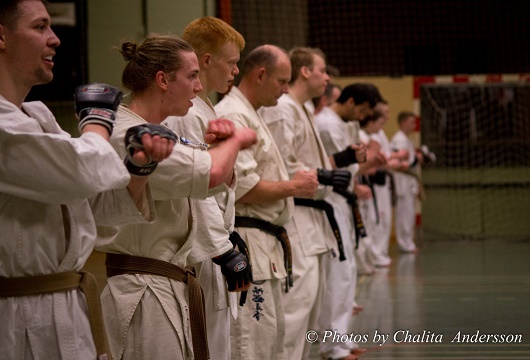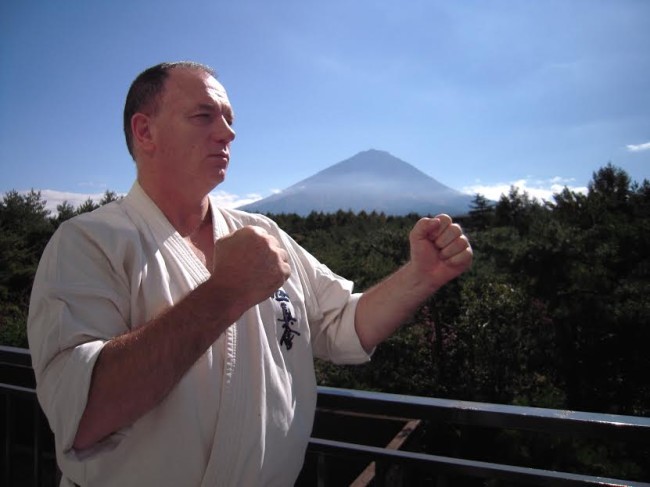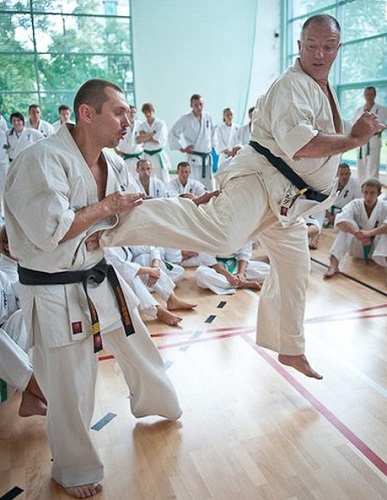 The Danish fight camp have a great tradition, and can offer all that you want as an active Full Contact fighter, coach or “Dojo fighter” The camp are put together perfect by Sensei Mathias Halberg, and his crew. At this camp the “feel-good focus” are one of the major factor. And anyone who have been training hard and much, knows how important this is. This year’s guest instructor will be Shihan Koen Scharrenberg from Holland.
The Danish fight camp have a great tradition, and can offer all that you want as an active Full Contact fighter, coach or “Dojo fighter” The camp are put together perfect by Sensei Mathias Halberg, and his crew. At this camp the “feel-good focus” are one of the major factor. And anyone who have been training hard and much, knows how important this is. This year’s guest instructor will be Shihan Koen Scharrenberg from Holland.
The camp have usually national teams from several countries supported by a solid number of Happy Camper`s – Dojo fighters!
First of all get the date in your calendar, Saturday the 7th of April 2018 from 09:00 to 20:00, and Sunday the 8th of April 2018 from 09:00 to 16:00.
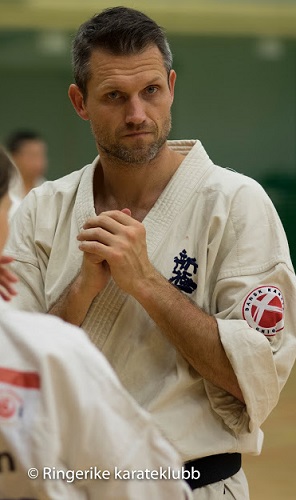 The camp is getting bigger each year, the date are always suited in front of the European Championship (11 & 12 May Poland, Wroclaw, 2018) Usually it has been a clue to use each other, and the sparring is central – regarding to high level and and in a considerable amount. We always point this out, but we think this is one of the reason to the huge success. Close to a big and so important as the European Championship, some can not see the possibility to do such a great deal of sparring. But this is melded into the culture of the camp, under the expert guidance of Sensei Mathias Halberg, and his crew. Focused on making each other better, and the technical part is continuous through the entire camp. Sparring is one thing, but let`s not forget the technical inputs!
The camp is getting bigger each year, the date are always suited in front of the European Championship (11 & 12 May Poland, Wroclaw, 2018) Usually it has been a clue to use each other, and the sparring is central – regarding to high level and and in a considerable amount. We always point this out, but we think this is one of the reason to the huge success. Close to a big and so important as the European Championship, some can not see the possibility to do such a great deal of sparring. But this is melded into the culture of the camp, under the expert guidance of Sensei Mathias Halberg, and his crew. Focused on making each other better, and the technical part is continuous through the entire camp. Sparring is one thing, but let`s not forget the technical inputs!
Visit official Facebook site for information about the camp!
The camp have a remarkable history of top instructors, few can compete with that. Adding to our thoughts that the camp have kept it going for almost twenty years..! Valeri Dimitrov Sensei, Kenta Mori Sensei, Dennis Grigoriev, Brian Jakobsen, Nazar Nazirov to mention some of the top instructors.! This year as mention Shihan Koen Scharrenberg from Holland. This is a person that have a lifetime within Kyokushin.
Koen Scharrenberg, president (1956)
Education:
Trainer and teacher of Physical Education. Specialization: exercise physiology,
athletics.
Study of criminal and civil law.
Professional profile:
Profession: journalist for Dutch television and national magazines. Also a
writer/novelist. Books published: fiction, two novels. Non fiction: five books on fighting
sports and (organized) crime.
Karate Profile:
Grade in shinkyokushin: 6th dan
Practicing kyokushin karate since: 1970
Teaching and training: every week, once or twice. At the
moment recuperating from shoulder surgery.
Member of the EKO-board: elected as Vice-president in 2004, elected as President in
2008.
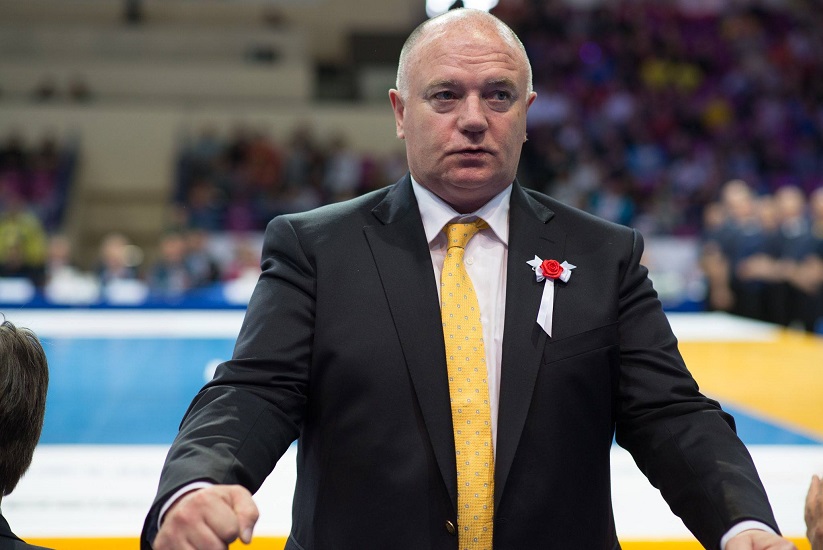 Experience in karate:
Experience in karate:
Multiple times Dutch and International Champion (eight years Holland Team
Member)
1/8 final in Second Open World Tournament 1979 (lost to champion Makoto
Nakamura)
Last 64 in Third Open World Tournament (lost to Willie Williams)
Two times training as ‘uchi deshi’ in Japan, under Oyama Sosai
Eight years trainer and coach of the Dutch Team (with Michel Wedel, Gerard and
Nico Gordeau, Peter Smit, Eric Constancia, John Kleijn, Michiel Gerritsen and
others).
Teaching and instructing on Summer Camps and seminars in: France, Poland,
Romania, Spain, Nepal, Denmark, Belgium, Norway, Germany, Switzerland, Holland
and other countries.
Trainer of Special Forces of France (GIGN) and Holland (BBE and AT’s).
Remarkable achievements in karate: broke up to 24 thick and massive baseball bats
in one minute with his bare shins, on Dutch television. This was in charity events,
thus earning up to 6.000 euro for Children in Third World Countries (search youtube
for: Koen Scharrenberg)
Best remembered fight: against Andy Hug. He was only 18 or 19 years old and I was
eight years older, but he was extremely tough and I could only barely beat him for the
Open Dutch Championship. From then on, until he sadly died, we became very close
friends and always visited each other several times a year. And my fights in Honbu,
with Keiji Sanpei. Every fight was very hard but we became very good friends. As I
have become with more strong (Japanese) opponents. There are few things better to
create friendship than the training and fighting together in kyokushin karate!
Karate biography:
Born in 1956, I started kyokushin karate in 1971, together with my twin brother Wim.
Our sensei was August Lumallesil, a Moluccan born man who from the start of our
career took us into his heart and many times in his home – his people’s tradition is, to
have great and wonderful tasting meals with friends and family, as much as is
possible.
Under his guidance, we trained hard and in1977 I obtained my shodan. During the
training and while fighting in tournaments, I had become fascinated with Japan as the
motherland of karate and of course with Masutasu Oyama, founder of the then
rapidly expanding kyokushin style. I remember listening to the stories of Peter
Voogts, who was a 5th dan at that time and had trained in the Tokyo Honbu, while
visiting Tokio. He also mentioned the uchi deshi: the traditional house students in
Japan (you also find them in ikebana, origami, drums playing and so on) that had a
very hard time in the kyokushin Honbu but made enormous progress in karate.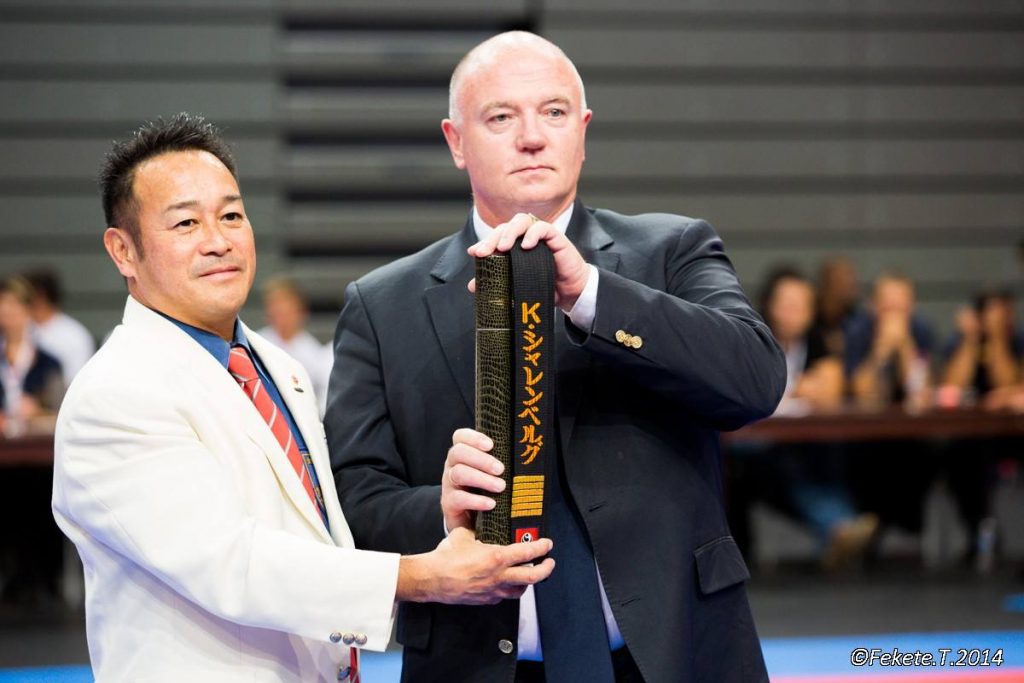 Admittance to train and live as uchi deshi was very limited and foreigners were rarely
Admittance to train and live as uchi deshi was very limited and foreigners were rarely
permitted to enter the Wakajishi Ryo, the House of Young Lions, as the dormitory
was called. In 1977 I won the Dutch Middleweight championship and I decided, to try
to make a dream come true: visit Japan and try to train as an uchi deshi in the Honbu
in Tokyo. Loek Hollander, then head of the European kyokushin organization, wrote
an letter of introduction and I took the plane.
After coming to Japan, I had to spend the first night in a hotel and then had a talk
with Sosai Oyama. In the end, he decided that I could enter as an uchi deshi. I was
happy, but that soon changed …
Training was very hard, with no protection allowed, so in the beginning my shins, feet
and muscles were hurting very much. I had to get used to the rhythm of training, with
many mae keages, push ups, hard and spirited kihon, hundreds of kicks and very
hard fighting. Sometimes sparring, which was relaxed, but also kumite – this was like
a tournament fight in Holland. And then ten or fifteen times over and over because I
had to face the black belts one after another and they really beat the sh… out of me.
So, every day I thought of leaving, but one way or another I was too stubborn. And I
wanted to succeed, not in the least because Sosai too an interest in me and hi
teaching was extremely inspiring. Every Sunday in the afternoon he instructed the
black belts; on Friday sometimes also and afterwards we had a meal in the Wakajishi
Ryo all together. On a normal day, we had to train all together stamina at 6.30 in the
morning, until 7.30, then have breakfast (rice and a raw egg, sometimes with fish),
clean the dojo, listen to a speech by Sosai at 09.30 and start the first training at
10.00. This Ichibu training finished at 12.30, then lunch (rice and fish usually), time
for an hour of sleep and at 16.00 hour Nibu, second training. Or you could take
Sanbu, the third training, at 19.00 hours. It had to be one of these. Around 21.30
dinner and sometimes to the Furo, the hot baths, near the Honbu. The very hot water
was great for the muscles. And then you fell unconscious on your Futon .. until 06.30
in the morning. This was six days a week for the Uchi deshi, for me the first three
week seven days a week …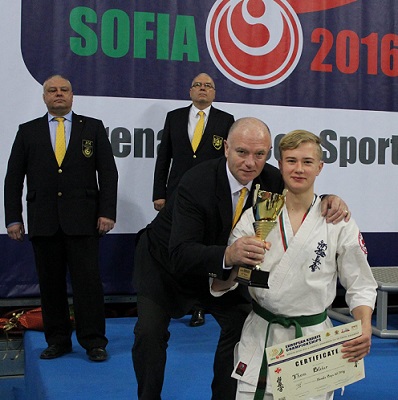 It was a great time, in spite of all the loneliness and pain.
It was a great time, in spite of all the loneliness and pain.
The loneliness and isolation ended after three weeks, when I was taken out with the
black belts after the Sunday afternoon training. This was also hard work: we drank
and ate until late and I was completely drunk – like all of us. But since I did not fall
unconscious or whatever, I was accepted by the black belts and gradually everything
became easier.
Still hard, but I was not kicked and beaten as hard as before. My
body adjusted to the grueling workouts and I came into a rhythm that was wonderful
and spirited, enjoying especially when Sosai was around or when we were fighting
hard amongst each other, but knowing that we made each other stronger.
When, after several months, I left for Holland again to take up my study as teacher of
physical education, I experienced one of the most moving moments of my life. The
Japanese instructors, the same ones who had beaten me fiercely for a long time (it
seemed endless haha) had organized a Guard of Honor when I came out of the
Honbu Dojo. I was almost moved to tears and left Tokyo as a happy man.
Later, after the Second World Tournament in 1979, where I was soundly beaten by
the later champion Makoto Nakamura, I went back to prepare for the Third World
Tournament and trained again as uchi deshi. This time it was different, knowing the
routine and adapting quickly, I was even allowed to stand I front of the class. Again I
had a great time, but in the World Tournament I faced giant Willie Williams in my third
fight. Him being much taller and heavier, I lost after a very hard and vicious fight.
After the World Tournament, I decided to focus on my study, went to law school and
eventually became a journalist for television and magazines, and also a writer and
novelist.
I traveled everywhere to train and teach, became coach and trainer of the national
team of Holland and, I can say, through kyokushin karate I have met true friends and
experienced great things. It has formed me in many ways. And I am still grateful to
the man who has given this to millions of people: Masutatsu Oyama Sosai.

